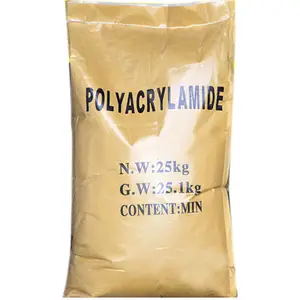Understanding Flocculant Price: An Introduction
The flocculant price is a significant factor in the water treatment and industrial processes where these chemicals are utilized. Flocculants are agents that promote the clumping of particles into a floc, which simplifies the process of sedimentation, clarification, and filtration. These substances are essential in a multitude of applications, including wastewater treatment, mining, and food processing, thus making their pricing a critical point to consider for businesses investing in environmental sustainability and operational efficiency.
Types of Flocculant Price: What to Consider
When evaluating flocculant price, it’s vital to understand the different types of flocculants available on the market. Each type has varying costs based on their chemical composition and application suitability.
- Anionic Flocculants: These are negatively charged and effective in neutralizing positively charged particles. They are commonly used in organic wastewater treatment.
- Cationic Flocculants: With a positive charge, these are excellent for treating sludge and can be integrated into paper manufacturing and municipal wastewater management.
- Non-Ionic Flocculants: These flocculants are neutral and are used in various industries due to their versatility and lower toxicity levels.
- Natural Flocculants: Derived from plant extracts or non-toxic materials, these are often preferred for industries focusing on eco-friendly processes.
Applications Affecting Flocculant Price
The application of flocculants widely influences the flocculant price due to differing requirements for efficacy, quantity, and specific formulations needed by various industries.
- Wastewater Treatment: Flocculants are pivotal in clarifying and treating municipal and industrial wastewater, where their cost may be offset by compliance with environmental regulations.
- Mining Operations: In the extraction of minerals, flocculants are vital for separating valuable ores from slurries, and the flocculant price can significantly impact the overall processing cost.
- Food and Beverage Industry: These agents are utilized in the clarification of liquids, such as juices and beer, making their cost a crucial aspect in the production cycle.
- Pulp and Paper Production: Flocculants facilitate fiber separation from waste, influencing production efficiency and costs directly related to flocculant pricing.
Factors Influencing Flocculant Price: A Comprehensive Overview
Several factors can impact the flocculant price, making it imperative for businesses to consider when planning budgets and processes.
- Raw Material Costs: The price of raw materials used in manufacturing flocculants directly correlates with market demand and availability.
- Production Process: The complexity of the manufacturing process, including any patented methods or technologies, can raise the final flocculant price.
- Volume of Purchase: Bulk purchasing often leads to discounts, meaning businesses may reap cost benefits through larger orders.
- Supplier Relationships: Building strong partnerships with suppliers may help negotiate better prices, taking into account quality and reliability.






























































































































































































































